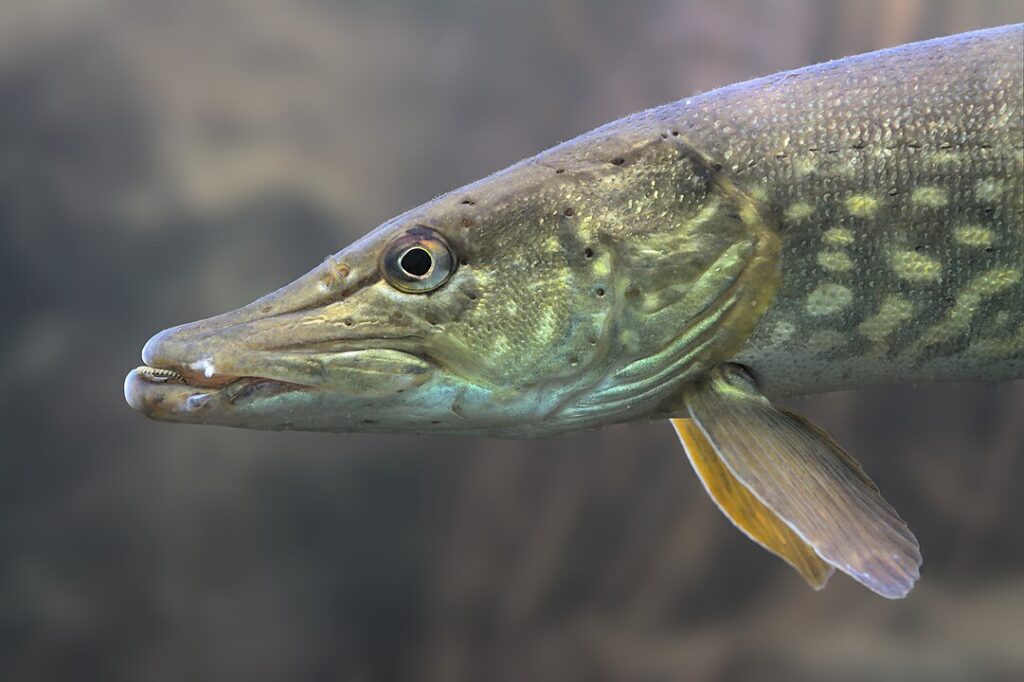What is eutrophication?
When lakes and streams have a surplus of nutrients, it is called eutrophication. The nutrients that lead to eutrophication are nitrogen and phosphorus. They are substances that occur naturally in the environment – and are important for the survival of plants – but there can also be too much of a good thing. Artificial fertilisers, wastewater and emissions from factories lead to large emissions of nitrogen and phosphorus into the environment. When these nutrients enter lakes and streams, algae, cyanobacteria and phytoplankton grow in abundance. This is what is known as an algal bloom. Then, when they die, they sink to the bottom of the watercourse. There, they are broken down by benthic animals and bacteria – organisms that use a lot of oxygen to live. Eventually, oxygen is depleted at the bottom. This causes fish and benthic plants to die, and biodiversity then decreases.
When too many nutrients go into rivers or lakes, it makes algae and cyanobacteria grow really fast. This can be dangerous and, in some cases, cause fish to die.
Photo: Christian-Fischer-CC-BY-SA
Bodies of water, like this pond, near human settlements often face a higher risk of becoming overfertilized because there are many sources of nutrient pollution.
Photo: Foto-von-Hydro-bei-CC-BY-SA
Agriculture using synthetic fertilizers is one of the major sources of nutrient pollution leading to eutrophication.
Photo: Dietmar-Rabich-CC-BY-SA
Poor sewage treatment is also a major source of nutrient pollution.
Skåne’s drinking water from important lakes
Skåne is a fertile agricultural landscape. Almost half of Skåne is agricultural land, and half of all food produced in Sweden comes from Skåne! But intensive agriculture also has an impact on the environment. Eutrophication is a major problem, and a large part of Skåne’s water is affected by eutrophication from agriculture.
Many people live in Skåne and the need for drinking water is great. At the same time, access to watercourses that can provide people with drinking water is limited. The people of Skåne mainly get their water from Vombsjön, Ivösjön and from Lake Bolmen in Småland. But you cannot just get water from lakes. Vombsjön is an important resting place for birds, and has great biological values. The lake is exposed to eutrophication with regular algal blooms, and the bottom of the lake lacks biodiversity. Malmö has been collecting water from Lake Vombsjön since 1948. It has lowered the water level in the lake by 2.5 metres. The lowering of the water level has led to a decrease in aquatic plants, which in turn increases the risk of algal blooms in the lake.
Lake Vombsjön, shared by the municipalities of Lund, Eslöv, and Sjöbo, faces issues of eutrophication. However, it also serves as a drinking water source for around half a million residents in Skåne.
Photo: Nils-Jepsen-CC-BY
Creating or restoring wetlands can be an effective way to reduce eutrophication in lakes and waterways. Here, an artificial wetland has been established near a wastewater treatment plant.
Photo: Eskilstuna-Energy-Environment-CC-BY
Restoring eutrophicated lakes
Since many lakes and rivers receive too many nutrients due to eutrophication, they are becoming overgrown. Fish and aquatic plants are being outcompeted. Watercourses need to be restored so that biodiversity can be preserved, and access to drinking water can be protected. Some lakes are cleared of the plants that cause them to become overgrown. To reduce eutrophication, wetlands are created around agricultural land, which will prevent nitrogen and phosphorus from entering the lakes.

Photo: Gilles-San-Martin-CC-BY-SA
Removing and inserting fish species
In many watercourses, biodiversity has declined. In lakes with too few predatory fish, there may be an excess of fish that eat small zooplankton. If the amount of zooplankton decreases – the amount of phytoplankton and algae increases. This, in turn, can make it even more difficult for fish to survive. In such cases, it may be necessary to carry out protective fishing. Some zooplankton-eating fish are fished out, and predatory fish are inserted. Sometimes streams and ditches entering the lake need to be cleared, to restore spawning grounds and give fish opportunities to make their way to the lake. Then fish and plants are reintroduced into the lake. In some lakes, fishing is restricted to reduce the depletion of certain species.